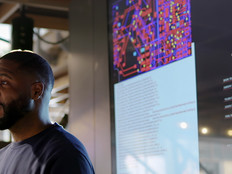STATETECH: You’ve identified digital services as a big priority for Texas. What’s on your radar?
Crawford: Texans expect the government to deliver the same level of service as the private sector. During the pandemic, you could order groceries, schedule mobile dog grooming, receive prescriptions and more, depending on where you are — all online. Certainly, Texans expect that their government, now more than ever, can deliver its services on demand and remotely.
To aid digital transformation, we’ve created a strategic digital services program that’s aimed at walking agencies through the digitalization journey. The technology is available, but often it’s the culture of an organization that determines what’s possible.
One of the projects that we’re really excited about is Texas by Texas, or TxT, which is our new digital assistant that provides an easier, faster and more secure way for Texans to take care of government services. Through TxT, you can create a single account and profile and access a personalized dashboard with stored payment information and transaction history. You can complete government transactions with just a few clicks — anytime, from any device.
It has been a web application, but it’s being developed as a native iOS and Android app available in the Apple and Google stores as of January. Some occupational licenses have been in the app since 2019, and we recently added vehicle registration renewals, driver’s licenses and commercial driver’s license renewals and replacements. We’ll add more services soon.











